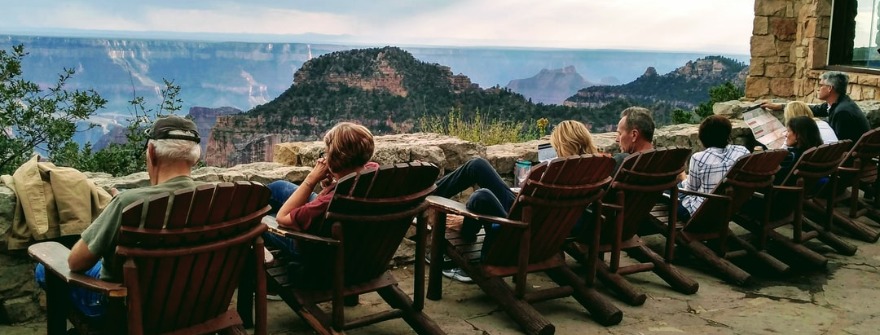North Rim of Grand Canyon
One of the USA’s top tourist attractions, found in Arizona is the Grand Canyon. The National Park is a UNESCO world heritage site that can get a little too overcrowded in the summer months unless you head deep into the park. It’s all about the great outdoors and amazing mountainous canyon scenery – a visit to the Grand Canyon really is a must if possible – try to check out the skywalk.
In this post, we’ll take a closer look at what makes the North Rim so special and why it is a must-visit destination for anyone looking to experience the Grand Canyon in a unique and unforgettable way.
What is the Grand Canyon North Rim?
The North Rim of the Grand Canyon is significantly different than the South Rim mainly due to the elevation difference of 1,500 ft (450 m) As compared to the South Rim, the north rim is wetter, colder, and has a shorter park season every year. Moreover, the North Rim is twice as far back from the Colorado River as the South Rim.

Major recreational activities at the North Rim include backcountry hiking, camping, scenic drives, horseback riding, biking, cross-country skiing, and the famous mule rides.
The major tourist attractions along the North Rim are North Rim Visitor Center, Grand Canyon Lodge, Bright Angel Point, and the Kaibab Visitor Center. The Visitor Center offers only limited facilities that include an 83-site campground and a few log huts in the nearby forest for accommodation. The nearest hotels are located about 82 miles (132 km) away in Kaibab.
North Rim has 2 main viewpoints towards the east. One is Point Imperial and the other is the spectacular Cape Royal. These viewpoints offer breathtaking views of the Canyon and its surrounding picturesque landscape. The various scenic driving tours that can be enjoyed here are:
- Cape Royal Scenic Drive
- North Rim Trails
- Transept Trail, Cape Final Trail
- Cliff Springs Trail
- Ken Patrick Trail
- Uncle Jim Trail
- Widforss Trail
- North Kaibab Trail
- Walhalla Ruins
- Western and Eastern Kaibab Plateau Trails
- Toroweap
The 5 hours journey along the scenic, 215 miles (346 km) route from the South Rim to the north rim is very exciting. This road drops down from the pine-covered plateau located near the canyon into the flat, empty, but colorful Painted Desert in the Navajo Indian Reservation. On its way, it crosses the flourishing Alpine meadows and forests of fir and pine. It shows only sporadic signs of habitation. Summer temperature at the north rim is generally 5-10 degrees lower than that at the South Rim. Moreover, night frosts can occur anytime during the year in the north rim.
What to do and see at the North Rim
The North Rim of Grand Canyon National Park offers visitors a wide range of activities and attractions to explore. Hiking is one of the most popular activities, as the North Rim provides access to some of the most scenic trails in the park. The North Kaibab Trail takes hikers all the way down to the Colorado River, providing breathtaking views of the canyon along the way. It’s important to note that this trail is not for the faint of heart and requires a high level of fitness and preparation. Other popular hikes at the North Rim include the Bright Angel Point Trail and the Cape Final Trail.
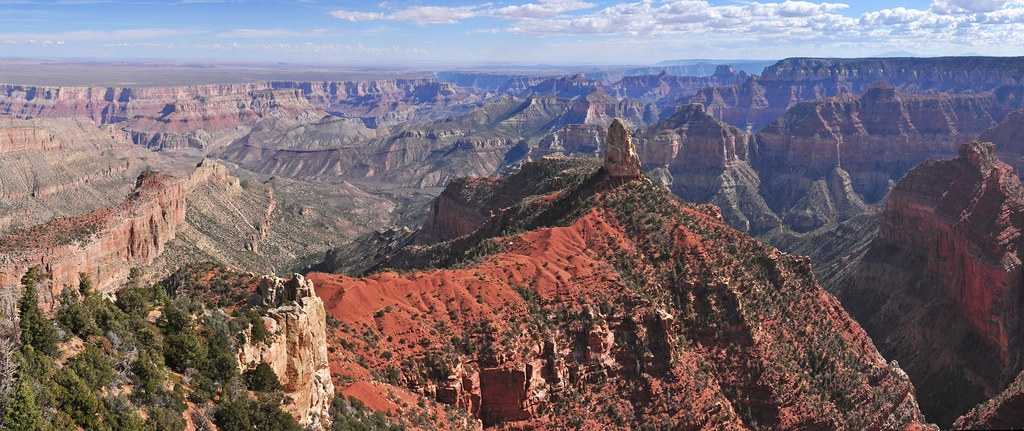
For those who prefer to take in stunning views without hiking, there are plenty of lookout points and scenic drives to enjoy. Point Imperial is the highest lookout point on the North Rim, offering panoramic views of the canyon and surrounding landscape. Cape Royal is another popular lookout point, providing views of the confluence of the Colorado and Little Colorado Rivers. The scenic drive along Highway 67 is also a must-do activity, taking visitors through stunning forests and meadows before reaching the North Rim.
In addition to hiking and scenic drives, visitors can also enjoy ranger-led programs, stargazing, and wildlife watching. The North Rim is home to a wide variety of wildlife, including elk, deer, and even the elusive mountain lion. The park also offers educational programs for visitors of all ages, including guided hikes and talks on the rich history and geology of the area.
Cape Royal Drive
Cape Royal Drive, also known as the North Rim Drive is named after Cape Royal, the southernmost viewpoint along the North Rim of the magnificent Grand Canyon. This scenic drive follows some of the North Rim’s most panoramic vistas. It uses the paved Cape Royal Road and is at an elevation of 7,865 ft (2397.5 m).
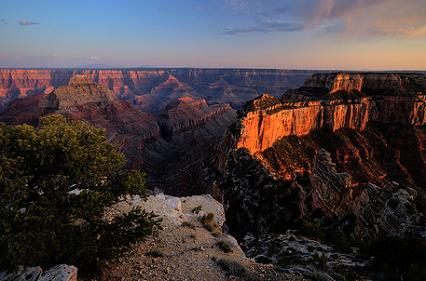
The Cape Royal Drive extends to a distance of 23 miles (37 km) from the Grand Canyon Lodge. The various viewpoints located along the road include Vista Encantada, Point Imperial, Roosevelt Point, Angel’s Window, Walhalla Overlook, and Cape Royal. Besides the viewpoints, the paved drive leads to several short hiking trails, a huge natural arch, and a prehistoric Glades Pueblo. A 0.6-mile (0.9 km) round-trip trail, descending into the canyon at the end of the road, runs past Angels Window to an incredible panorama at Cape Royal just above a grand curve of the Colorado River.
There are no supplies made available on the drive. Therefore, it is advisable to bring food and water along with you for a picnic. The Cape Royal Road abides east off Highway 67 and cuts through the forest to the east for 6 miles (9.6 km) to another intersection. At this intersection, it turns right toward the Walhalla Plateau and the spectacular Greenland Lake, Vista Encantada, Cape Final, and Cape Royal.
The major tourist attraction at this turn are the Green land Lake and the Salt Cabin on the southeast side of this lake. From here, a 17-mile (27.3 km) drive southwards, along the paved road, will lead you to several other viewpoints, a convenient picnic area, Cape Royal Parking Lot. Another tourist attraction near the parking lot is the well-preserved Anasazi Dwelling.
The paved road passes through thick forests of locust, spruce, and ponderosa pine mixed with stands of quaking aspen. Besides, there are lovely meadows of scarlet burgle and blue lupine along Cape Royal Road. You can also spot long-eared mule deer and the reclusive white-tailed Kaibab squirrel in this region. Cape Royal Drive is a trip in itself as there is enough to see and do here for an entire day.
Grand Canyon Lodge
The Grand Canyon Lodge is located in the Grand Canyon National Park and is maintained by National Park Service Western Regional Office. It was designed by Gilbert Stanley and was built by the Utah Parks Company in 1927-28.
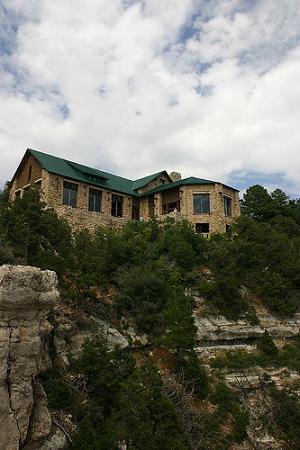
Grand Canyon Lodge is a complex that consists of the main lodge building, 91 standard cabins on the Bright Angel Point, and 23 deluxe cabins. These deluxe cabins are grouped together to the northeast of the main lodge building and are made on a slight rise. On the other hand, the standard cabins are located to the southwest and are placed on a moderate slope descending into the Transept Canyon. The main lodge is the central feature and is banked into the side of the rim.
Initially, the main lodge was a rustic building with Californian overtones and Spanish revival styles. However, after it was rebuilt in 1938, it became less stylized and more strictly rustic. At present, it is U-shaped and has a wood frame construction made of Kaibab Limestone, log slab, and ponderosa logs. Its multiple roofs are finished with roof shingles. The main lodge building houses the dining room, registration lobby, recreation room, sunroom, western saloon, “buffeteria,” utility rooms, kitchens, and various offices. Besides, there are a variety of porticos in the lodge building.
The deluxe cabins are made of half-log siding on wood frames with stone foundations and stone corner piers. There are a total of 18 deluxe duplexes and 5 quadruplexes. The former has a rectangular plan while the latter is square in plan. The standard cabins are much smaller than the deluxe cabins and are placed very close to each other. These cabins are rectangular in plan.
Grand Canyon Lodge has a well-built pioneer flavor that persists even today despite the vehicles and the crowds that arrive here. The topographic setting of the complex, comfortable cabins, log and stone building materials, the beautiful main lodge building, and the grand vistas in the area, make this lodge a pastoral visitor experience.
Point Imperial
Point Imperial is one of the two main viewpoints of the north rim and is the highest vantage point that can be reached by road. It is situated at the North Terminus of the Point Imperial Road. It is the highest in the Park and is located eastwards at an elevation of 8,803 ft (2683 m) above sea level. It is about 6,600 ft (2011.6 m) above the Colorado River. This viewpoint overlooks the Canyon that appears shallow and less branched from here.
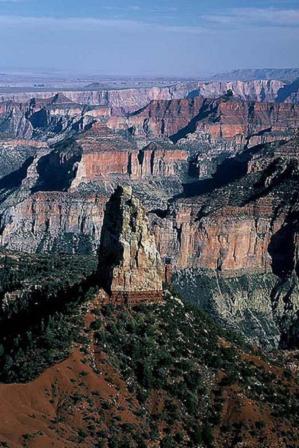
Point Imperial offers breathtaking views of vast areas of the Painted Desert in the Navajo Reservation. The flat, empty, but colorful Painted Desert is located at the east end of the Grand Canyon. It also provides excellent views of the panoramic Mt. Hayden. One can also view Marble Canyon and Saddle Mountain from this viewpoint.
Besides, Point Imperial offers spectacular views of the Vermilion Cliffs on the north perspective, Nankoweap Creek below, smoothed Navajo Mountain on the horizon in Utah to the northeast, and the Little Colorado River Canyon to the southeast. To reach this point, you need to follow the Cape Royal Road for 5.3 miles (8.5 km), and then turn left and drive further for 2.7 miles (4.3 km). Picnic tables under the trees and public restrooms are also provided here.
Point Imperial lies to the north of the Walhalla Plateau and is the nearest point to the Grand Canyon Lodge on that eastern edge. It is an awesome place to view the sunrise and is a must-see when you visit the Grand Canyon. The moments just before sunrise provide the most remarkable lighting of the sky. The early sun on the sandstone offers marvelous spectacle and vivid colors.
Vista Encantada
Vista Encantada is situated along the North Rim’s Cape Royal Road. Its name has been derived from the Spanish word meaning “enchanting view“. This viewpoint is appropriately named so as it offers breathtaking views of the magnificent Brady Peak, the upper drainage of Nankoweap Creek, and the flat, empty, but colorful Painted Desert to the east. Vista Encantada’s viewpoint is oriented mainly northeast and oversees the Walhalla Plateau. It is located near Roosevelt Point.
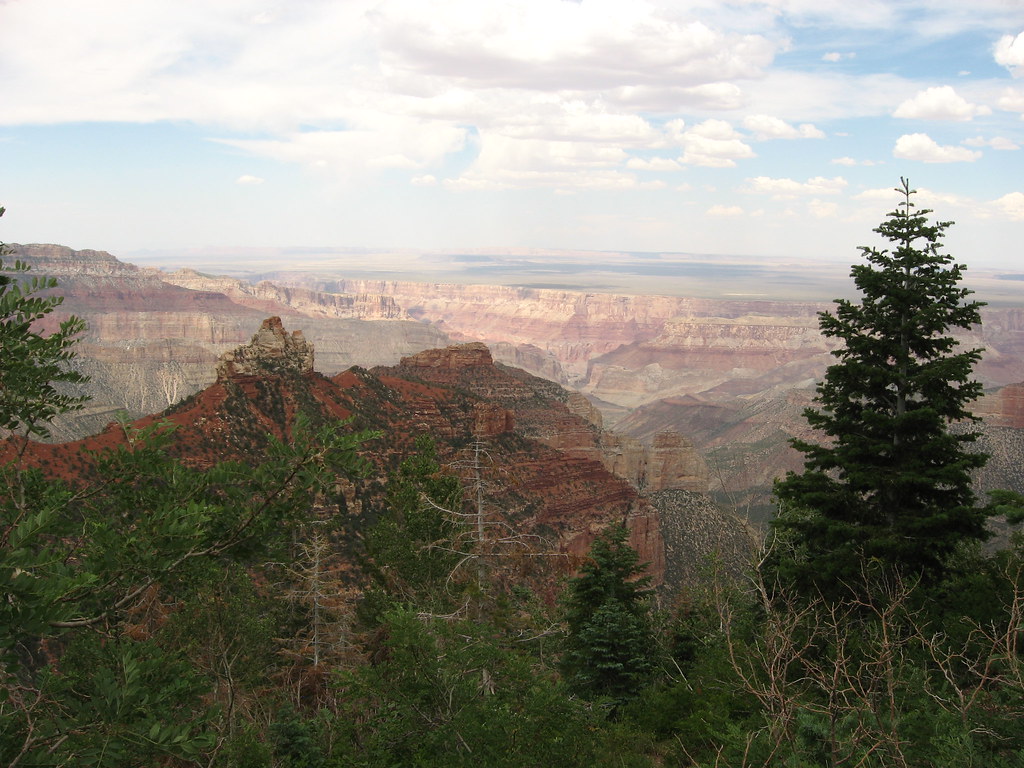
This viewpoint is, in fact, the best place for a picnic. When driving along Cape Royal Road, you can opt to stop here at lunchtime. There are several picnic tables provided in the shade. These tables have fabulous off-side canyon views. Unlike the South Rim, where there are only a limited number of tables, the north rim’s Vista Encantada provides several tables with other picnic facilities to its visitors, thus proving to be the most convenient stopping place on the north rim. The favorite official lunch served here comprises very tasty salami sandwiches.
Several short trails run off along the rim at this viewpoint. You can reach Vista Encantada by driving along the scenic Cape Royal Road past a trailhead for the Ken Patrick Trail and the spectacular Greenland Lake onto the Walhalla Plateau. This Viewpoint is not only the best lunch spot but is also the best place to view the magnificent North Rim of the Grand Canyon.
Flora and Fauna of the North Rim
The North Rim of the Grand Canyon is a natural wonder that is home to an abundance of wildlife and breathtaking scenery. Visitors to the North Rim can expect to see a variety of animals in their natural habitats, including elk, bison, deer, and even the occasional mountain lion or black bear.
In addition to the wildlife, the North Rim is also home to a diverse range of plant life, including towering Ponderosa pines, colorful wildflowers, and beautiful aspen groves. Hiking trails wind through these forests, providing visitors with the opportunity to get up close and personal with nature.
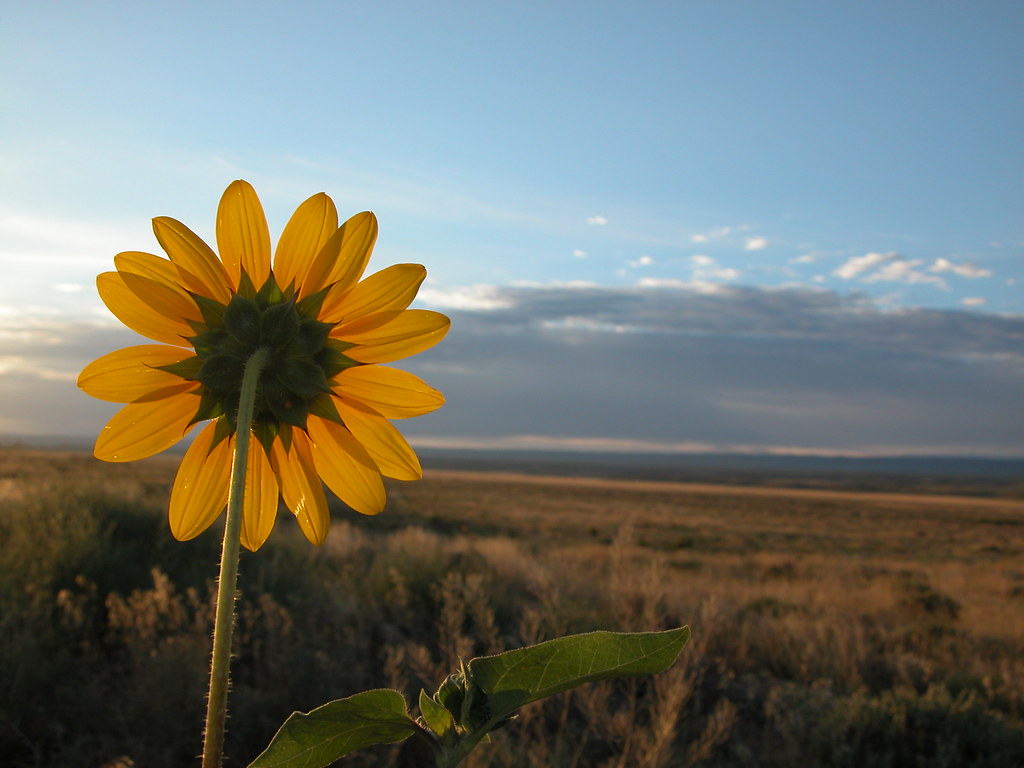
One of the best ways to experience the wildlife and nature at the North Rim is by taking a guided tour. Many tour companies offer guided hikes and nature walks, which provide visitors with a unique perspective on the area’s natural beauty.
For those who prefer a more leisurely activity, there are plenty of opportunities for birdwatching and photography. The North Rim is home to a wide variety of bird species, including bald eagles, hawks, and owls. Whether you’re an experienced photographer or just starting out, the North Rim offers endless opportunities for capturing stunning nature photos.
How to get there and where to stay
Getting to the Grand Canyon North Rim can be quite a journey, but it’s definitely worth it. The North Rim is located in a remote area of Arizona, and it’s not as easily accessible as the South Rim. However, the drive to the North Rim is incredibly scenic and will take you through some of the most beautiful parts of Arizona.
The North Rim is only accessible by car and is approximately a five-hour drive from Las Vegas. If you’re driving from Phoenix, it will take you approximately six hours. The North Rim is closed during the winter months due to snow, so be sure to check the park’s website for seasonal closures before planning your trip.
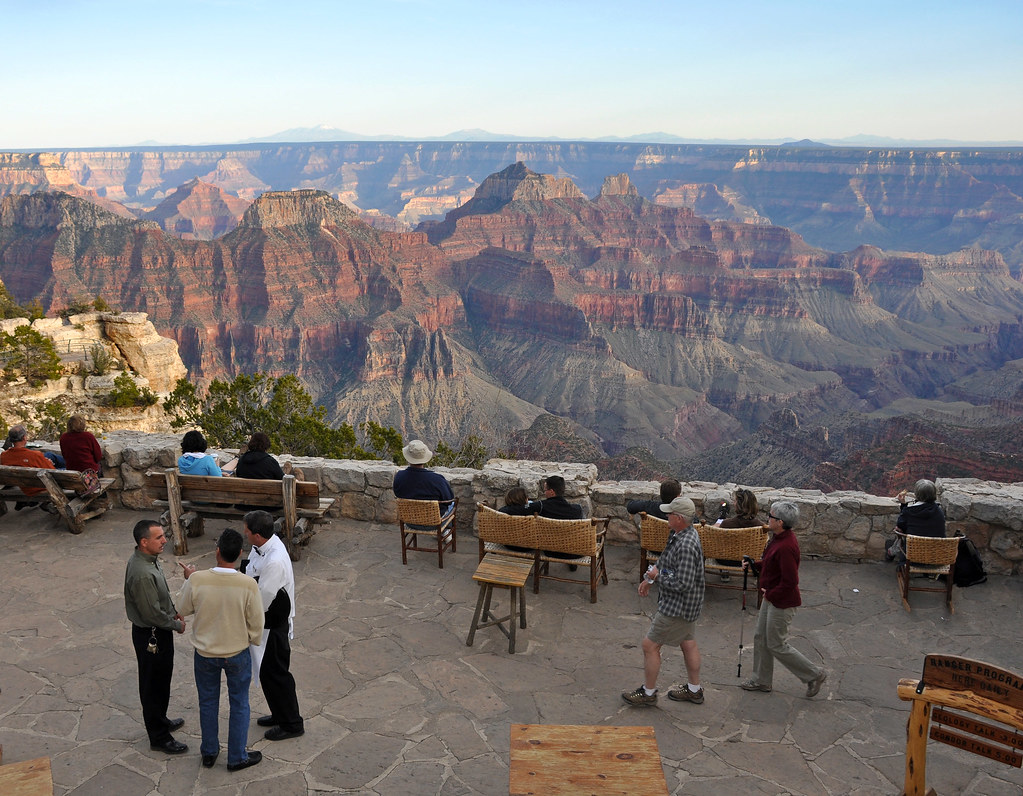
When it comes to accommodations, the North Rim has several options for visitors. The Grand Canyon Lodge North Rim is the only lodging option within the park and offers cabins, motel rooms, and suites. The lodge is located right on the rim of the canyon and provides breathtaking views of the canyon from your room. It’s important to note that lodging at the North Rim fills up quickly, so be sure to make your reservations well in advance.
If you’re looking for a more rustic experience, there are also several campgrounds located within the park. The North Rim Campground is the only campground within the park that takes reservations, so be sure to book ahead of time. There are also several first-come, first-served campgrounds available.
Camping options and tips for camping at the North Rim
Camping at the North Rim of the Grand Canyon is a unique experience that offers breathtaking views and a chance to connect with nature. There are two campgrounds available for visitors, the North Rim Campground and the DeMotte Campground. Both offer tent and RV camping, but the North Rim Campground has the added bonus of being located within walking distance of the North Rim Lodge and the Bright Angel Point trailhead.
It’s important to note that both campgrounds fill up quickly and reservations are highly recommended. The North Rim Campground is open from mid-May to mid-October and reservations can be made online up to six months in advance. The DeMotte Campground is first-come, first-served and is open from mid-May to mid-October as well.
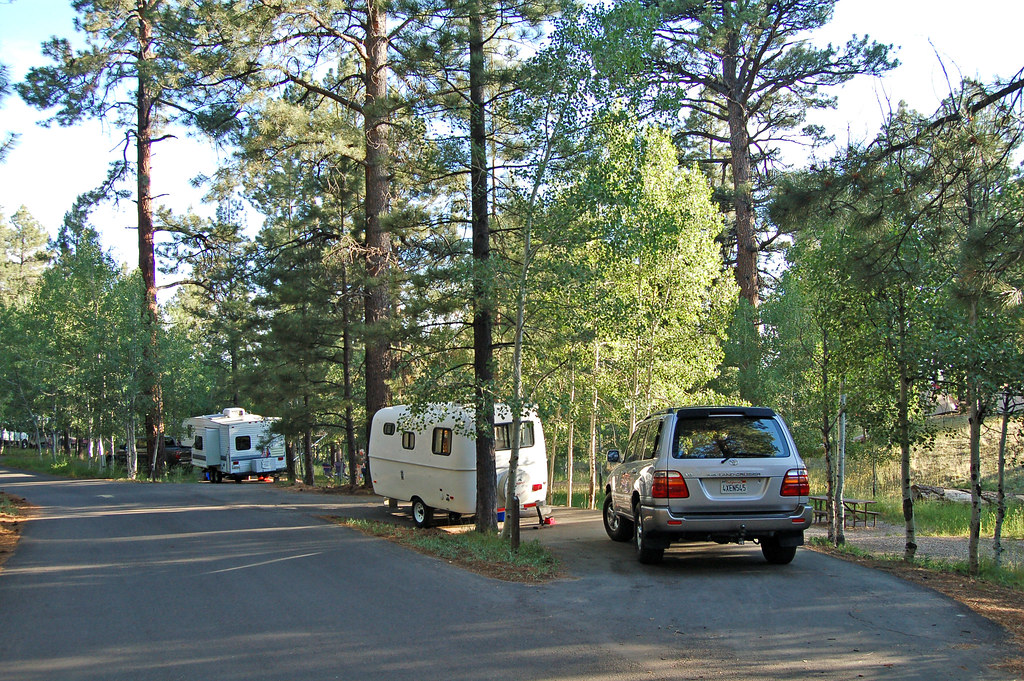
If you’re planning on camping at the North Rim, it’s important to be prepared. Temperatures can drop significantly at night, even during the summer months, so bring warm clothing and extra blankets. It’s also important to bring plenty of water and food, as the nearest town is about an hour away.
When setting up your campsite, be sure to follow all guidelines and regulations set forth by the National Park Service. This includes properly storing food and trash to avoid attracting wildlife.
Best Time to Visit
Visiting the Grand Canyon North Rim can be a wonderful experience any time of the year, but there are certain times when it’s particularly beautiful. The best time to visit the North Rim is from mid-May to mid-October when the park is open and the weather is mild. During this time, you’ll be able to take advantage of the park’s many hiking trails, scenic vistas, and ranger-led activities without worrying about snow or extreme temperatures.
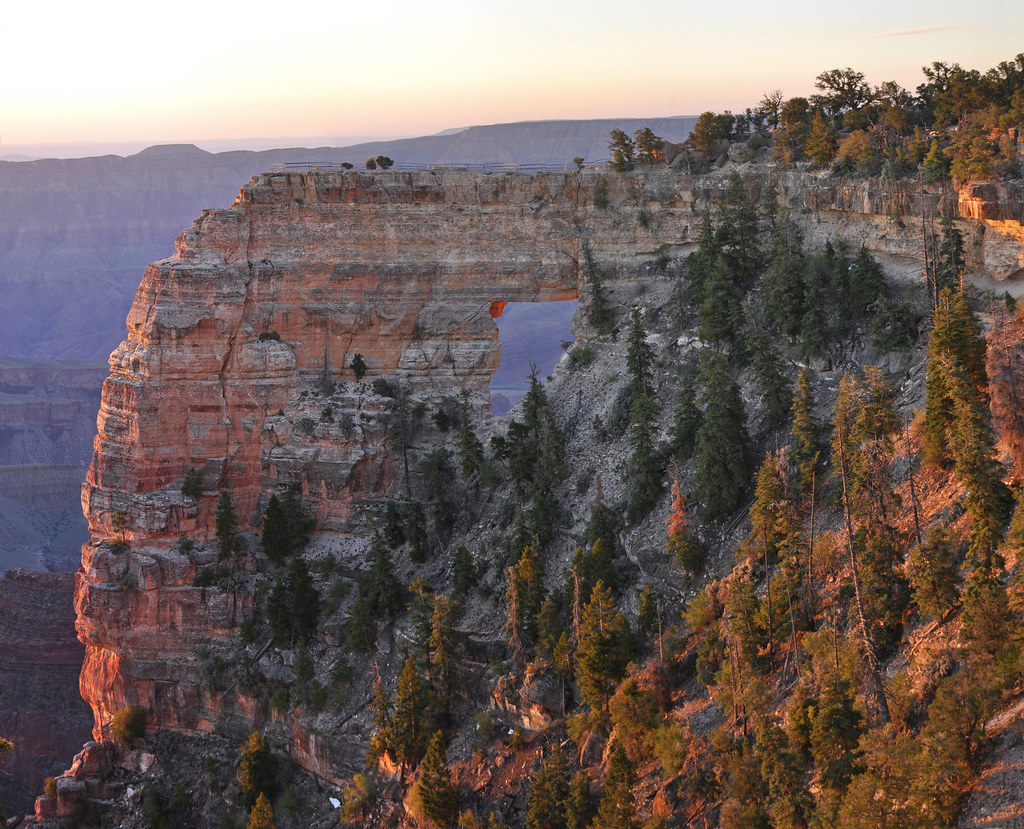
If you’re planning to visit during peak season, it’s important to book your accommodations and activities in advance as they tend to fill up quickly. Keep in mind that the North Rim is at a higher elevation than the South Rim, so temperatures can be cooler and more variable. It’s a good idea to bring layers of clothing and rain gear just in case.
If you’re looking for a more peaceful and secluded experience, consider visiting the North Rim during the off-season. The park is closed in the winter months due to heavy snowfall, but the shoulder seasons of spring and fall can be particularly beautiful. The crowds are smaller, the leaves are changing colors, and the cooler temperatures make for excellent hiking conditions. However, it’s important to note that some facilities may be closed during the off-season, so plan accordingly.
Why you should visit the North Rim.
In conclusion, the Grand Canyon North Rim is a hidden gem in the Southwest that deserves to be explored by all nature lovers and adventure seekers. The North Rim offers a unique experience compared to the popular South Rim, with fewer crowds, stunning views, and a more remote and rugged atmosphere.
Visiting the North Rim means you can hike through peaceful trails, camp under the stars, and enjoy breathtaking views without being surrounded by tourists. The North Rim also provides access to a wide range of outdoor activities such as horseback riding, backcountry camping, and scenic drives.
If you’re planning a trip to the Grand Canyon, we highly recommend giving the North Rim a chance. Its beauty and tranquility are unmatched, making it an unforgettable destination for anyone looking to escape the bustle of everyday life and immerse themselves in the natural wonders of the world. So pack your bags, grab your camera, and get ready to experience the Grand Canyon North Rim – the hidden gem of the Southwest.
